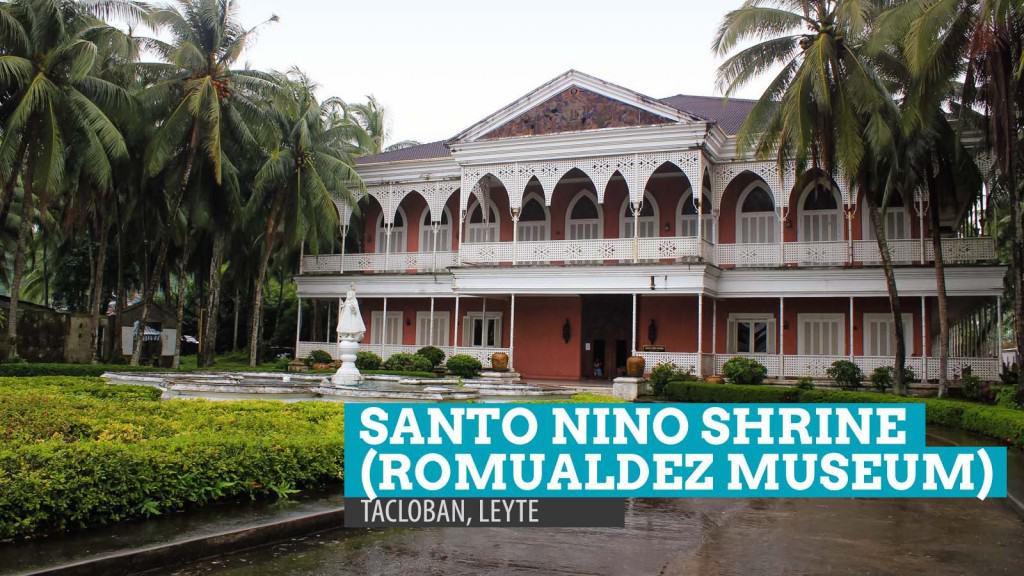2011 • 7 • 18
The biggest buzzkill in our Tacloban-Marabut trip was the rain. On our third day — when we were scheduled to tour Tacloban City — it rained the hardest. So hard that we had to spend a couple of hours more at Caluwayan Beach Resort until it became a bit tolerable. When it did, we rode a van to Tacloban City.
But the weather in Tacloban was no better. If anything, it was worse. We had to drop our plan of getting off at the foot of the San Juanico Bridge for a camwhoring session. We went straight to a restaurant for brunch and waited for the skies to get better. It never did.
Braving the rain, we decided to start our City Tour at a place indoor and the first thing that entered our confused heads was the Santo Niño Shrine.
About the Santo Niño Shrine (Romualdez Museum)
The Santo Niño is probably one of the first to come to mind when Tacloban is mentioned. It is the patron saint of the city and many of its people’s religious events revolve around the Santo Niño.
Although the real miraculous image can be found inside the Sto. Nino Church, there is another image that can be found inside the Romualdez museum. This one is made of Italian ivory and is the centerpiece of the altar that welcomes the guests visiting the Shrine. Beside the Sto. Niño were icons of St. Remedios and St. Vincent. Next to the latter is a monstrance, decorated with diamonds. That section of the museum is lit by beautiful chandeliers hanging above rows of pews made of narra.
When we arrived at the museum, we were greeted by the staff member who got so concerned about us dripping from the rain. After a short conversation (where we were from, why we braved the rain, etc), we decided to enter the place and pay. Rate is P200 for a tour (at most 6 people). Since we were a group of 3, we paid around P67 per person. If you wish to bring a camera, you will also have to pay an additional amount.
Guests are required to take off shoes and put on provided slippers. After explaining each items at the altar, we started checking out the 12 guest rooms surrounding the “chapel.” That is where the Santo Niño connection stops and everything is somehow about another thing that comes to mind when Tacloban is brought up — Imelda Marcos.
The Sto. Niño Shrine and Heritage Museum is one of the many rest houses that the Marcoses had built. It houses 7 bedrooms built for the members of the Marcos family, 13 guest rooms, a ballroom and what looked like conference rooms. Each room is magnificently designed and decorated. Each with a theme. Each with a diorama of the life story of Imelda. The site is also littered with numerous expensive, even priceless, pieces of art that will introduce your jaws to the floor each time. From imported furniture to local artworks, the place just screams magnificence, loud and clear.
After the tour, we did not know how to feel about it. It was amazing to see such beautiful artifacts, such delicate intricacies, such works of art. But the whole place was like a symbol of grandeur, of power, of excess. We left with hearts heavier than the rain outside.
Where to Stay in Tacloban
Here are some of the top rated hotels on Agoda.
- Ironwood Hotel. Check Rates & Availability! ✅
- Hotel XYZ. Check Rates & Availability! ✅
- Bamboo Garden Boutique Hotel. Check Rates & Availability! ✅
- Z Pad Residences. Check Rates & Availability! ✅
- Hotel Estrella. Check Rates & Availability! ✅
- The Ambassador Hotel. Check Rates & Availability! ✅
